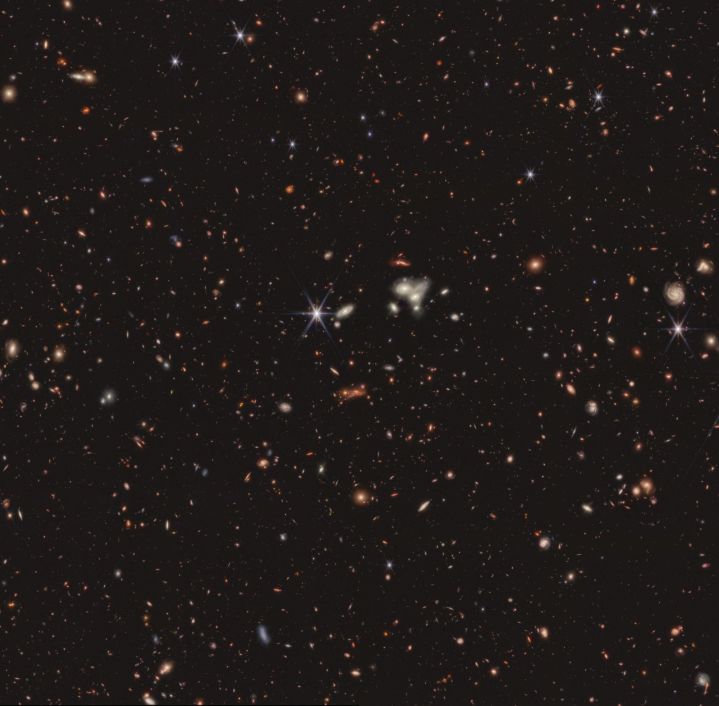As well as observing specific objects like distant galaxies and planets here in our solar system, the James Webb Space Telescope is also being used to perform wide-scale surveys of parts of the sky. These surveys observe large chunks of the sky to identify important targets like very distant, very early galaxies, as well as observe intriguing objects like black holes. And one such survey has recently identified the most distant active supermassive black hole seen so far.
While a typical black hole might have a mass up to around 10 times that of the sun, supermassive black holes are much more massive, with a mass that can be millions or even billions of times the mass of the sun. These monsters are found at the heart of galaxies and are thought to play important roles in the formation and merging of galaxies.

A very early example of these supermassive black holes was recently discovered, dating back to just 570 million years after the big bang. Located in a galaxy named CEERS 1019, it was identified as part of a survey called Cosmic Evolution Early Release Science (CEERS) which uses Webb to take huge images of parts of the sky. By looking at regions away from the bright center of the Milky Way and which don’t have bright nearby galaxies obscuring the view, the survey can identify very dim and distant objects.
“Looking at this distant object with this telescope is a lot like looking at data from black holes that exist in galaxies near our own,” said lead researcher Rebecca Larson of the University of Texas at Austin in a statement.

The galaxy in which the supermassive black hole resides is interesting too. In the data, it looks like three blobs in a line rather than the single disk which would be expected. That could give clues to how the galaxy came to be, as the result of colliding with other nearby galaxies.
“We’re not used to seeing so much structure in images at these distances,” said CEERS team member Jeyhan Kartaltepe of the Rochester Institute of Technology. “A galaxy merger could be partly responsible for fueling the activity in this galaxy’s black hole, and that could also lead to increased star formation.”
As well as this black hole, CEERS also identified 11 extremely old galaxies, ranging from the time when the universe was between 470 million and 675 million years old. By studying these very early galaxies, researchers hope to learn about the way that galaxies formed and grew throughout the history of the universe.
“Webb was the first to detect some of these galaxies,” said Seiji Fujimoto of the University of Texas at Austin. “This set, along with other distant galaxies we may identify in the future, might change our understanding of star formation and galaxy evolution throughout cosmic history.”
Editors' Recommendations
- Biggest stellar black hole to date discovered in our galaxy
- Stunning image shows the magnetic fields of our galaxy’s supermassive black hole
- See what James Webb and Hubble are observing right now with this tool
- See 19 gorgeous face-on spiral galaxies in new James Webb data
- James Webb snaps a stunning stellar nursery in a nearby satellite galaxy




